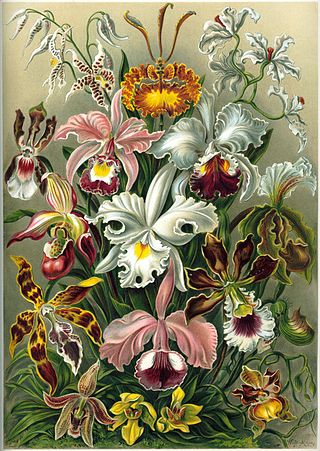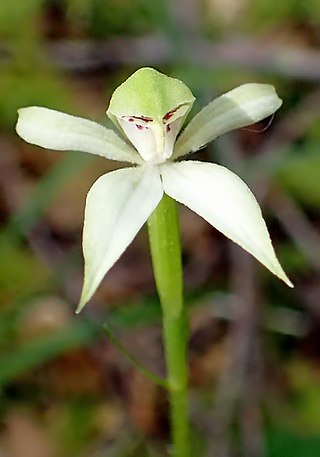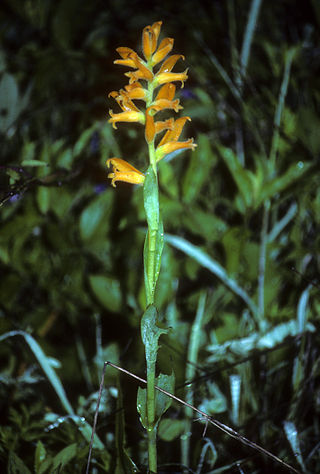
The taxonomy of the Orchidaceae has evolved slowly during the last 250 years, starting with Carl Linnaeus who in 1753 recognized eight genera. De Jussieu recognized the Orchidaceae as a separate family in his Genera Plantarum in 1789. Olof Swartz recognized 25 genera in 1800. Louis Claude Richard provided us in 1817 with the descriptive terminology of the orchids.. The next step was taken in 1830-1840 by John Lindley, who recognized four subfamilies. He is generally recognized as the father of orchid taxonomy. The next important step was taken by George Bentham with a new classification, recognizing subtribes for the first time. This classification was first presented in a paper that Bentham read to the Royal Society in 1881. Then it was published in 1883 in the final volume of Genera Plantarum. The next great contributors were Pfitzer (1887), Schlechter (1926), Mansfeld (1937), Dressler and Dodson (1960), Garay, Vermeulen (1966), again Dressler (1981). and Burns-Balogh and Funk (1986). Dressler's 1993 book had considerable influence on later work.

The Orchidoideae, or the orchidoid orchids, are a subfamily of the orchid family (Orchidaceae) that contains around 3630 species. Species typically have a single (monandrous), fertile anther which is erect and basitonic.
Aspidogyne mendoncae is a species of orchid that grows in Brazil.

Pogoniopsis is a genus of orchids. It contains two known species, both endemic to Brazil. It was previously included in the subfamily Vanilloideae, but is now placed in the tribe Triphoreae of the subfamily Epidendroideae.

Lecanorchis is a genus of orchids belonging to the subfamily Vanilloideae.

Stenia is a genus in the orchid family (Orchidaceae). It was established by John Lindley in 1837. These epiphytic plants occur in warm, humid habitats of Trinidad and the Amazonian slope of the northern Andean region in South America.

Disperis is a genus of plants in the orchid family, Orchidaceae. It has about 78 species. Most of the species are from tropical and southern Africa, as well as Indian Ocean islands. A few are native to the tropical or the warmer subtropical regions of Asia and Malesia.

Adenochilus, commonly known as gnome orchids is a genus of two species of flowering plants in the orchid family Orchidaceae, one endemic to New Zealand and the other to Australia. Both species have a long, horizontal, underground rhizome with a single leaf on the flowering stem and a single resupinate flower with its dorsal sepal forming a hood over the labellum and column.

Arthrochilus, commonly called elbow orchids, is a genus of about fifteen species of flowering plants from the orchid family (Orchidaceae) and is found in Australia and New Guinea. The flowers are pollinated by male thynnid wasps which attempt to mate with the flower and are held in place by hooks while the pollinium is transferred between insect and flower.

Dichromanthus is a genus of flowering plants from the orchid family, Orchidaceae. As currently delimited, it is monophyletic and includes four species:
- Dichromanthus aurantiacus(Lex.) Salazar & Soto Arenas - much of Mexico, south to Honduras
- Dichromanthus cinnabarinus(Lex.) Garay - from Texas to Guatemala
- Dichromanthus michuacanus(Lex.) Salazar & Soto Arenas - from Texas and Arizona south to Honduras
- Dichromanthus yucundaaSalazar & García-Mend. - Oaxaca

Neotinea is a genus of flowering plants from the orchid family, Orchidaceae. It is native to much of Europe, the Mediterranean region, and the islands of the eastern Atlantic, from the Canaries, Madeira and Ireland east to Iran and Western Siberia.
Sarcanthopsis, commonly known as goliath orchids, is a genus of six species of flowering plants from the orchid family, Orchidaceae. Plants in this genus are large epiphytes or lithophytes with long, thick, leathery stems, large, crowded leathery leaves and many yellowish flowers on a branched flowering stem. Orchids in this genus occur in New Guinea and islands of the south-west Pacific.

Cranichideae is an orchid tribe in the subfamily Orchidoideae.

Diseae is an orchid tribe in the subfamily Orchidoideae. It was recognized in Genera Orchidacearum volume 2, which was published in 2001. It consisted of 12 genera in five subtribes. In molecular phylogenetic studies that were published after 1999, it was shown that Diseae is paraphyletic over the tribe Orchideae. In a classification of orchids that was published in 2015, Diseae was not recognized, but was instead placed in synonymy under Orchideae.

Vanilleae is an orchid tribe of 9 genera in the subfamily Vanilloideae.

Gastrodieae is an orchid tribe in the subfamily Epidendroideae.

Pogonieae is an orchid tribe in the subfamily Vanilloideae.

Neottieae is an orchid tribe in the subfamily Epidendroideae. It contains six genera and over 200 species distributed mainly in temperate and subtropical zones of the northern hemisphere. All its members are terrestrial plants, hinting at an early branching with Epidendroideae which is largely an epiphytic group. Neottieae is likely to be the result of a single temperate radiation of epidendroids, although it appears that some lineages in this tribe have crept back into the tropics.

Pogonia is a genus of orchids belonging to the subfamily Vanilloideae.

















